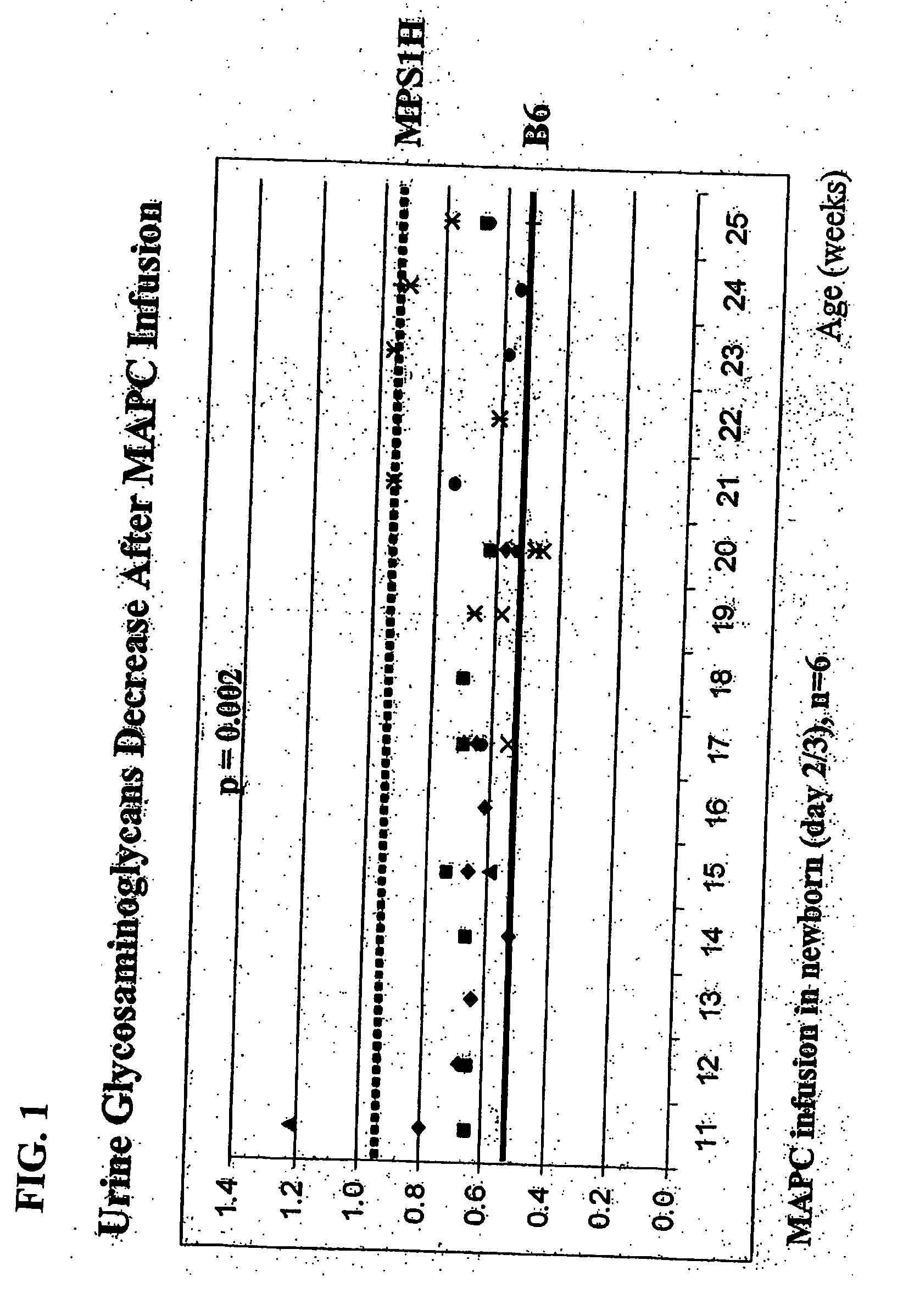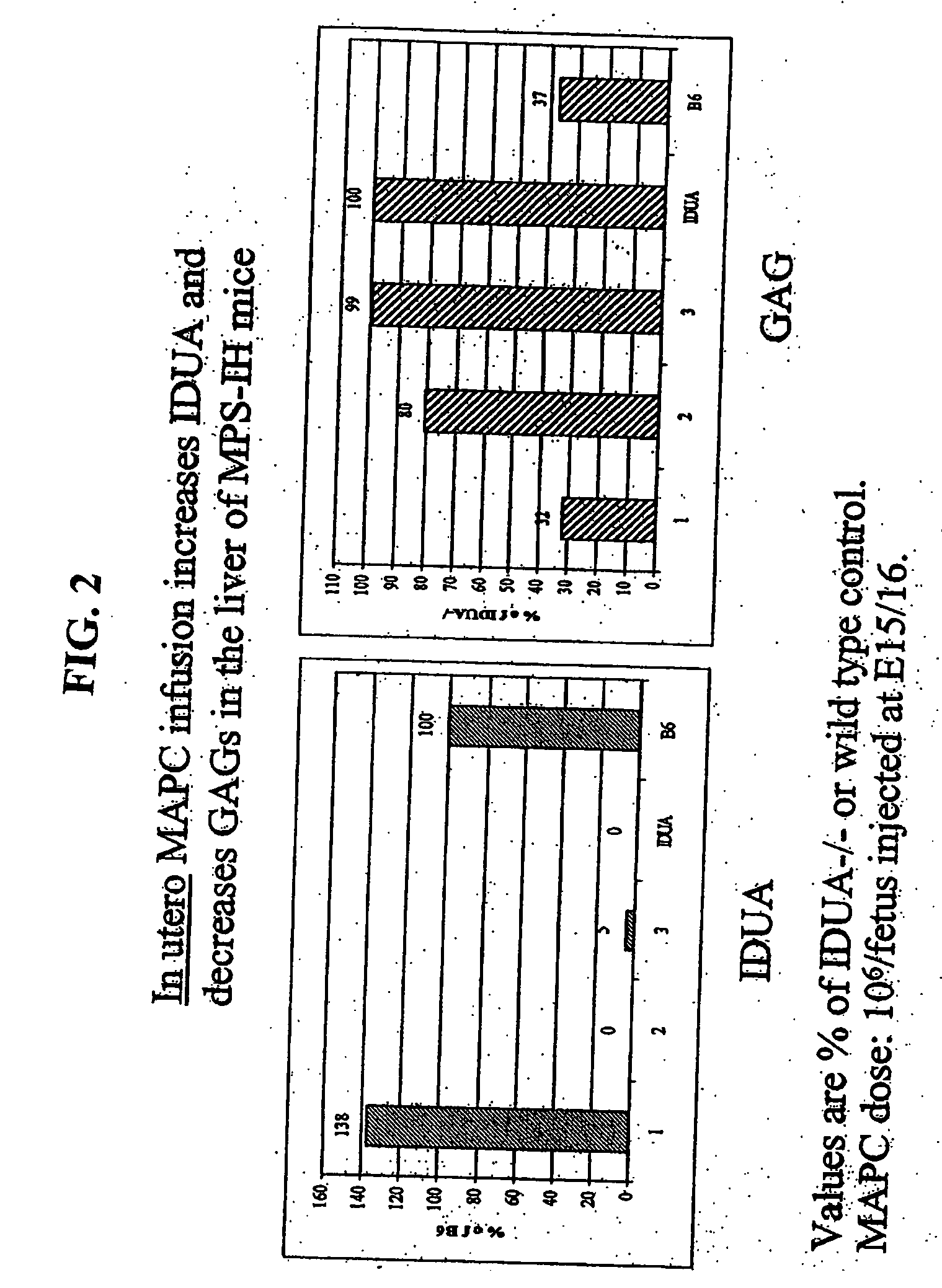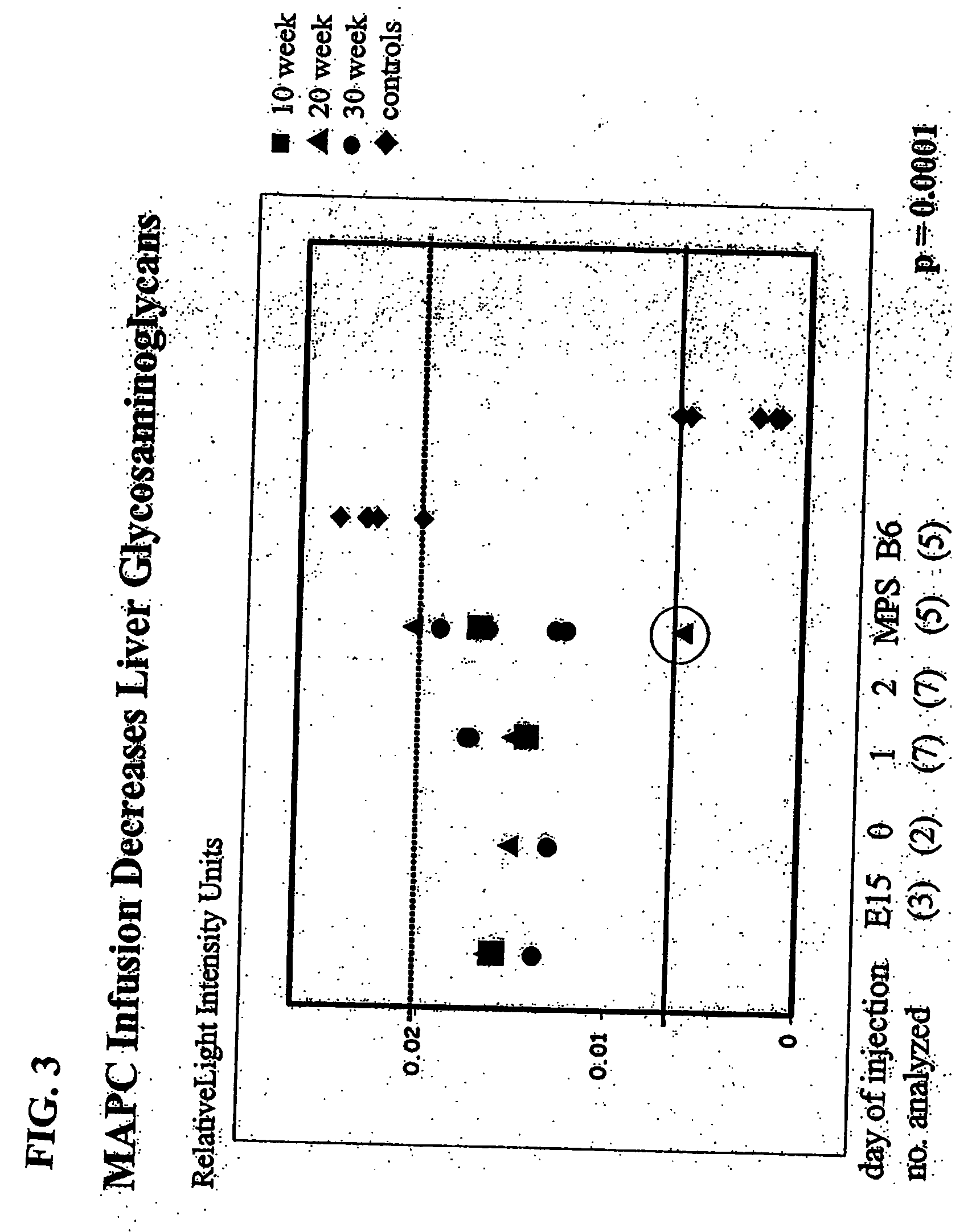Compositions and methods for the treatment of lysosomal storage disorders
a technology of lysosomal storage and composition, applied in the direction of biocide, peptide/protein ingredients, genetic material ingredients, etc., can solve the problems of engorgement of organelles, irreversible defects, and short circulating and intracellular half-lives of enzymes, and achieve the effect of modulating (preventing or decreasing) the accumulation of substrates
- Summary
- Abstract
- Description
- Claims
- Application Information
AI Technical Summary
Benefits of technology
Problems solved by technology
Method used
Image
Examples
example 1
MAPC Engraftment in Severe Combined Immunodeficiency (SCID) Recipients
[0194] MAPCs were isolated from bone marrow of C57BL / 6J-rosa26 mice, which contain the lacZ reporter gene and the neomycin resistance gene. These mononuclear bone marrow cells are capable of differentiating into endodermal, mesodermal, and ectodermal germ layers. Bone marrow mononuclear cells (n=2, age 8 weeks) were depleted of CD45 and GlyA positive cells using micromagnetic beads (Miltenyi Biotec, Sunnyvale, Calif.). CD45−, GlyA− cells were plated in medium consisting of 60% DMEM-LG (Gibco-BRL, Grand Island, N.Y.), 40% MCDB-201 (Sigma Chemical Co., St. Louis, Mo.), with 1× insulin-transferrin-selenium (ITS), 1× linoleic acid-bovine serum albumin (LA-BSA), 10−9 M dexamethasone (Sigma) and 104 M ascorbic acid-2-phosphate (Sigma), 100 U penicillin and 1000 U streptomycin (Gibco) on fibronectin (FN; Sigma), laminin, collagen type IV, and Matrigel™ with 2% fetal calf serum (FCS; Hyclone Laboratories, Logan, Utah) an...
example 2
MAPC Infusion in a Murine Model of Hurler's Syndrome
[0199] Mice deficient in α-L-iduronidase (IDUA− / −; MPS-1H) have no detectable IDUA, have an increased level of GAGs leading to skeletal and CNS abnormalities, and exhibit progressive coarseness. MAPCs were isolated from C57BL / 6J-Rosa26 mice essentially as described in Example 1 and injected into control or MPS-1H mice at either embryonal day E15 / 16 or postnatal days 1-3 (dose for E15 / 16:1 million cells / fetus, dose for postnatal: either 215,000 or 450,000 cells / gram of body weight). MAPCs were allowed to home to tissues for 10, 20, and 30 weeks.
[0200] Urine was collected weekly from 11 to 25 weeks to measure GAG excretion. Newborn day 2 / 3 MPS-1H MAPC recipients (n=6) showed significantly decreased excretion of GAG (p2O, 100 μl of picric acid solution (comprising a 1:10 dilution of picric acid), 100 μl of a 7.5 g / L NaOH solution. Each sample was mixed by inversion and vortexed for 20 minutes. Color developed after 20 minutes, and 2...
PUM
| Property | Measurement | Unit |
|---|---|---|
| Fraction | aaaaa | aaaaa |
| Fraction | aaaaa | aaaaa |
| Fraction | aaaaa | aaaaa |
Abstract
Description
Claims
Application Information
 Login to View More
Login to View More - R&D
- Intellectual Property
- Life Sciences
- Materials
- Tech Scout
- Unparalleled Data Quality
- Higher Quality Content
- 60% Fewer Hallucinations
Browse by: Latest US Patents, China's latest patents, Technical Efficacy Thesaurus, Application Domain, Technology Topic, Popular Technical Reports.
© 2025 PatSnap. All rights reserved.Legal|Privacy policy|Modern Slavery Act Transparency Statement|Sitemap|About US| Contact US: help@patsnap.com



